

Trends, Strategy, Design
2016 Design trends: Do not fear the competition, no matter how big they are.
The only things stopping you from creating a business that can succeed against a major competitor are patience, a dedication to research, and embodying the culture of your target audience.
How to design a product that will surpass your dominant competitor
1. Identify your top competitor’s power user groups and segment them by culture
We’ve all heard of Adobe Photoshop. It’s been the dominant app for web designers for more than a decade, yet in 2010 a tiny team (Bohemian Coding) in the Netherlands launched a new design application called Sketch to challenge Adobe’s $1 billion in sales.
Sounds a little crazy doesn’t it? Not when you consider that at the time the President of the National Association of Photoshop Professionals (representing 70,000 Photoshop users) posts a politely irate letter denouncing Adobe’s pricing and upgrading policies. At the same time, Apple’s iPhone launched in 2008, and with it had created an app market reaching 3 billion total downloads by 2010. Things were changing in the web design world and Adobe’s traditional separation of Photoshop as a bitmap editing suite and Illustrator as a vector program left many designers who wanted to craft mobile and responsive designs, out in the cold.
Identify the key culture of power users and make them feel special
Since Sketch launched in 2010 it has become the best damned possible web design app to address the needs and culture of designers that were disenfranchised by Adobe’s bulky and expensive suite. As a product specifically created to address the growing culture of UX/UI designers, and one with a one-time price of $49 (now $99), it’s no wonder many designers started very publicly dumping Photoshop.
By 2014 Sketch 3.0 had reached the top of the Mac App Store and become the top choice for UX/UI designers. They identified and connected with a group of Photoshop’s power users so well that they now are the product of choice if you plan to do any UX work today.
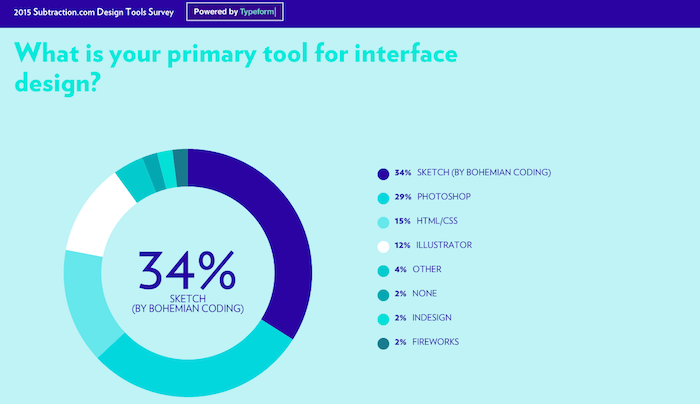
Bohemian Coding is part of a growing list of companies unafraid to get head-on against major competition. Slack has done similar to the Google Apps product line in hopes of creating the type of business communication people want. AirBnB has ramped up their global machine to now go head-to-head with the hotel industry by offering experiences that are more personal and unique. And Expensify has challenged bookkeeping products by being hyper-targeted to employees trying to track their expenses. Take a look at this list of 27 top apps and you’ll see a trend towards hyper-specialized niche offerings that target very specific use case cultures, mostly developed by small startups.
The press love to call this disruption — I’d rather think of it as entrepreneurs being fearless in their determination to offer a better product, no matter how large their competition is.
2. Create a set of principles that aligns with and addresses your users’ wants
Now that you’ve identified a culture that’s in need of a better product it’s time to be realistic with yourself. Unless you’ve won the lottery you cannot deliver a product immediately that will directly compete with major corporations. You’ll need to develop the product using the Lean Methodology, starting with an MVP (minimal viable product), and aim to release features in phases.
You likely have a limited budget and tiny team, so how do you decide which features to prioritize?
Given your lofty goal of taking over the world, you need to go back back to basics: asking your future customers about their current product usage so that you can truly understand their motivation and their pain.
Pepsi, Apple, Proctor & Gamble, Pfizer are only a short list of the companies that have implemented design research programs based on the IDEO design thinking methodology. It’s a very valuable toolkit for any sized organization to better understand the problem they are trying to solve for.
Applying the Design Thinking Methodology to assess your market and opportunity
In the case of a small company targeting dominant competitors to find weaknesses, it starts by empathizing with problems your target audience is having with the product, defining the problem so that it’s an addressable challenge, and then ideating on potential solutions that will create an experience that your audience will embrace.
Slack’s growth to a multi-billion dollar communication product for businesses was based on these exact principles. Founder Stewart Butterfield explained their initial product research process toFirstRound.com and explained that Slack arose out the team’s failed Glitch multiplayer game in 2011.
Even though the project was shut down in 2012 it was enough time for the team to experience a major gap head-on. Their team faced struggles to find a platform to communicate and collaborate on, so they built their own rather than rely on either a twenty year-old chat protocol (IRC), or on extremely basic chat consumer services like Google Talk and Skype.
Butterfield explained that at that point this team felt they were on to something and needed to see a variety of people from different office types and sizes use communication software to see what the gap was. “We begged and cajoled our friends at other companies to try it out and give us feedback,” he said. “Rdio, in particular, was much bigger than us. They used it with a small group of front-end developers for a while but then it spread to the whole engineering group and then to all 120 people in the company,” From there they analyzed what tools each type of team used and tried to understand the motivations between the choices towards and against other products.
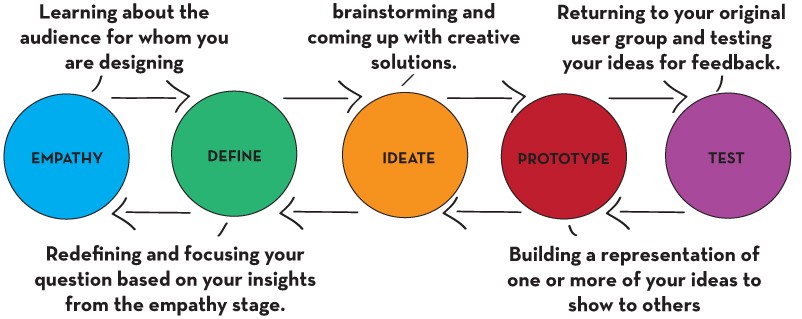
The future Slack team effectively followed the design thinking process of empathizing with the problem (experiencing a lack of communication tools), before defining it (understanding how to solve for the lack of a tool that works across a variety of org sizes and types), as a way to help their team understand what they needed to build.
As much as the excited entrepreneur in all of us loves to believe that solving problems like this is quite straight forward — it never is. In Slack’s case creating an inter-office messaging product that everyone will use has as many complex components to address as would trying to create a mobile phone that every person around the world wants to use.
That’s the challenge Steve Jobs took on when Apple aimed at dominating with the iPhone and dominating the personal computer market with the Mac. At the foundation of it all, Steve Jobs set principles that would define Apple’s impressive product line.
Sure, you can rush into making a product, however if you first create a set of principles like Steve Jobs did it will help you stay connected to your customer’s culture and create the best products possible. Also, by setting principles down it gives your team and company the freedom to pivot and address new market conditions while staying true to your customer’s interests.
Apple and Slack’s design principles
The 6 pillars of Steve Jobs’ design philosophy:
Craft, above all
Empathy
Focus
Impute (“The idea of understanding a consumer’s needs before they actually needed what Apple was making”)
Friendliness
Finding simplicity for the future in metaphors from the past
These principles were the foundation of every success Steve Jobs was behind and it spoke to a design thinking philosophy determined to connect with customer in a very human-centric way that expressed empathy and appreciation to changing times.
In the case of Slack their challenge lay in creating a set of principles that understood the disconnect Microsoft workers in Redmond had, as well as the challenges a fully remote team of consultants had staying on top of things, as well as the pains that a team of programers at a small video game startup had discussing bugs.
“There’s a very particular place we want to be in people’s minds: not too boring and stodgy, but never slapstick. We want it to be relatable — genuine, respectful”
“There was always an understanding that this was a tool people were going to spend their entire day in, so we sought to bring an empathy to the design.”
“We can be the bottom layer of the technology stack, and make everything else better.”
Define your company’s design principles
Start by isolating the core problems you are trying to address, then humanize them. Give them vivid colour, personality, a scenario, names, and a setting that makes it easier for you to understand what factors go into setting the tone for that problem.
Empathize with the people in your scenario and create a list of the behavioural changes you need to make in the setting, in the product, and in the person.
Once you understand what emotional, social, financial, and uniquely personal traits are involved in shifting them to your product, then you have the foundation of your principles.
Expanding upon that, your principles are directives which will define each and every part of your company in its goal of transforming the target customer’s behaviours.
3. Develop a product that kicks ass at fulfilling those principles and cut yourself some slack before releasing the perfect product
Armed with your design principles you’re now able to focus each part of your business and product ideation process on becoming the exemplary choice for your target audience/culture.
For some people ideation is a wild throw everything at the wall session, for others it’s a discipline of intense study and research of the current market dynamics and opportunities. However you get your golden idea, nothing beats the feeling when your idea connects with your principles. When the two resonate together you know that giving up years of your life for it will be worth the risks.
In 2007 Joe Gebbia and Brian Chesky had one of those moments. San Francisco was bustling and packed — no hotel rooms were available because of a large design conference. Like most 27-year olds, they were having a hard time paying rent and had supply of something others wanted: a place to stay. That night the future $25 billion-valued AirBnB was born. However, like any newborn, there’s lots of learning and lots of failing on the agenda before growing up into the company that is redefining travel.
Your first concept will be one part exhilarating and one part a massive failure
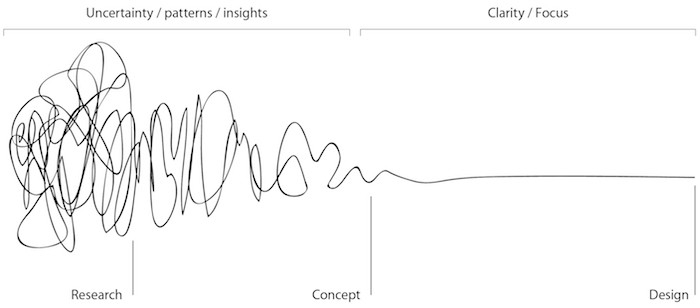
Once you have an idea for the first concept there are three directions you can go:
Follow the Sketch model: Design a simple product that addresses a very specific problem, then keep scaling the product features up in future releases. In their case they increased adoption by having each release build upon the last and clearly illustrated a dedication to becoming the product-of-choice for UX designers.
Follow the Slack model: Make a statement with your first product and then keep fine-tuning it as you monitor who are using it and their habits. They had no idea the product was going to blow up the way it did, but their iterative release strategy was very reflexive based on user studies and data.
Follow the AirBnB model: Prototype your first idea (renting an air mattress in your spare room) and operate with that model until you reach your first major roadblock, then pivot. With each generation of prototypes (AirBnB’s second iteration was setting up shared accommodation listings around the 2008 Democratic National Convention) you learn more about your business opportunity, roadblocks, and operational strengths.
None of these approaches guarantees results or peace of mind. In each situation the teams involved were on the brink of failure several times and in all good luck played a huge part in them eventually achieving success. Here are 7 rejections that AirBnB received when it was trying to get funding in 2008.
Cut yourself some slack, your “perfect design” may take a long time to find
Every first prototype and release is terrible. If it isn’t terrible, then you waited too long to release it.
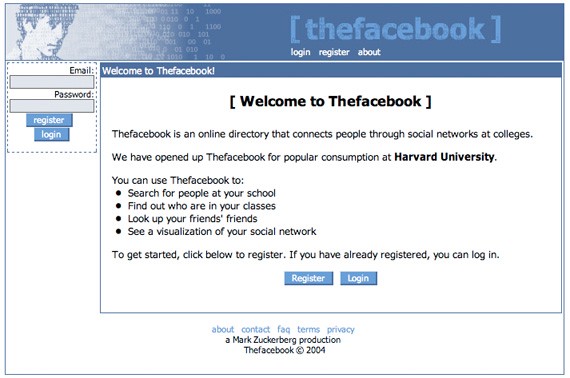
It was because the first few versions of Facebook, Google, iTunes, AirBnB, Paypal, NetFlix, were so atrociously basic that they reached market quickly and allowed for a large enough user base to test and research. So please cut yourself some slack if your future game-changer might come out of the gate hobbling or missing a couple of teeth — you’ll have plenty of time to pretty it up once you know whether people care.

By 2009 AirBnB had received its first major funding (from Y Combinator), seen revenue increase by 50% and had reached 10,000 users — all astonishing metrics of success for such a new company. You could say that this iteration of their product had taken off, however revenue began stagnating and fellow accommodation site HomeAway blew past them with a $250 million funding round.

Good companies accept their position in the market; great companies use adversity as a challenge.
Rising to the challenge the AirBnB executives researched and identified that bad pictures were limiting potential customer’s trust in the company. They addressed by pivoting their product to make professional photos more prominent and added resources to encourage strong photos.
Next challenge: In the summer of 2009, a widely-covered story that a home was trashed by a guest. Again AirBnB addresses it by bolstering its public commitment to security and trust by launching a homeowner’s guarantee and additional security features.
Through each of these iterations and challenges AirBnB evolved into the company that celebrated its 100-millionth booking this year. This evolution to market innovation took eight years and many more iterations, failures, challenges, and near misses than they will ever admit.
When you’re planning for first and second versions, remember to cut yourself some slack and allow yourself to fail fast so you can succeed better.
4. Harness that community and redefine the market so your competition looks out-of-touch
I’d rather you not wait around for luck to propel your soon-to-be great idea to new heights.
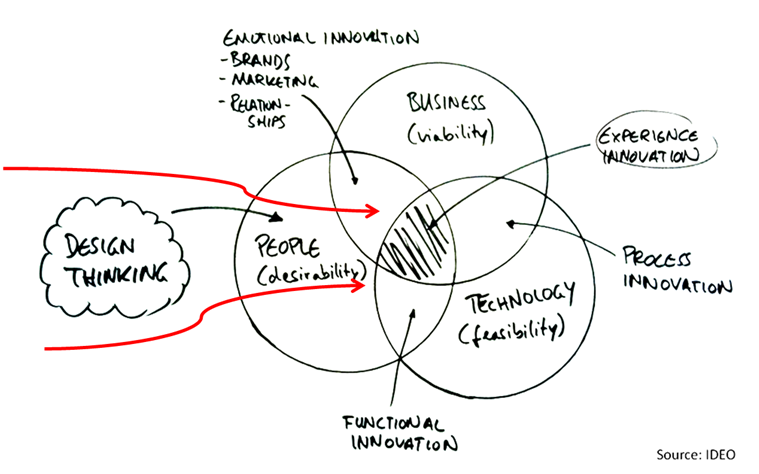
Yes, your product may ooze of a perfectly mixed blend of desirability, feasibility, and usability in the same way a perfect wine balances body, decadence, and delicateness. But much like that perfect wine made by a tiny winery atop a hill, you need an audience to come and resoundingly embrace it before you will find success.
Before you run and panic that the Fortune 500 and NASDAQ companies of the world have exponentially more marketing budget than you, look to these two lessons in how to create a passionate audience where there never was one before:
Those cars look ridiculous: how car2go became the global car share company
Car2go is the silliest and most successful car sharing company in the world. Available in 29 cities in the world, more than 1,000,000 members rent tiny smart cars by the minute.
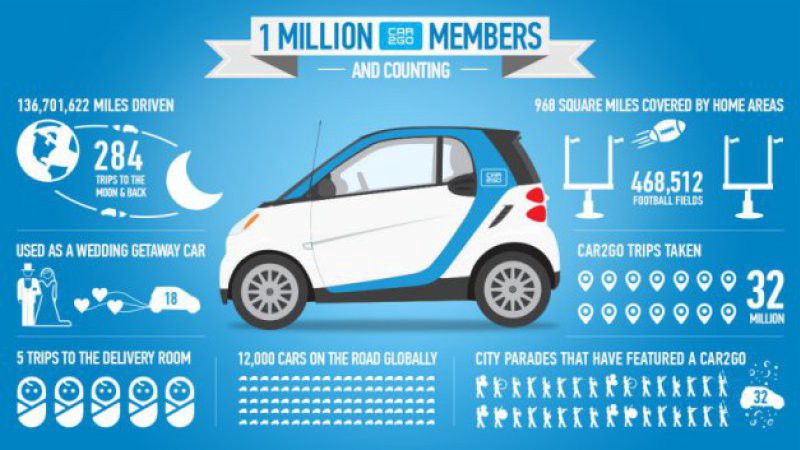
It isn’t a true startup because it was funded by Daimler (makers of Mercedes Benz) in hopes of promoting their new line of solar-power assisted cars, however the challenges they faced and the way they faced them are a great lesson to entrepreneurs.
Here are some research stats about the car sharing marketing in 2009:
“Since 1994, a total of 50 carsharing programs have been deployed in North America33 are operational, and 17 are defunct. As of July 1, 2008, there are 14 active programs in Canada and 19 in the U.S., with approximately 319,000 carsharing members sharing over 7,500 vehicles in North America”
To put it mildly, car sharing was quite a niche market. For the most part car sharing companies were civic experiments and co-ops aimed at addressing climate change and increased urban congestion, rather than setting their sights on being direct competitors to car ownership, car rentals, and taxis.
One company, Zipcar, was trying to position themselves for national expansion. Between 2005 and 2012 the company acquired several competitors and received several rounds of funding and eventually went IPO. At one point Zipcar reached a valuation of $1.2 billion!
So why is car2go the story here and not Zipcar? Where Zipcar bound itself to a model that was essentially car rentals by the hour, car2go researched and created a model that had a goal of changing people’s behaviours around car sharing. Where Zipcar was environmentally beneficial because it helped take a few cars off the road, car2go’s entire fleet are a challenge to the entire auto industry by being some of the most environmentally-friendly vehicles ever made.
car2go harnessed the growing culture of environmentally-friendliness in a way that blew away its competition. They also created a marketplace system that made car sharing easier and became a direct competitor to taxi services, and never tried to replace car-ownership. Within a few years of being in operation, driving a car2go became as fashionable for urbanites as long coats and Uber, whereas Zipcar lost 60% of its valuation and was acquired by Avis Car Rental.
The lesson here: Even if you see a similar competitor go for the same market, there’s always an opportunity to make a stronger claim to become the voice of that culture. Often taking one step towards innovation isn’t enough to change the behaviours you need to redefine the entire marketplace. car2go took a big risk and they were rewarded by taking car sharing out of niche and into the fashionable spotlight.
Why would anyone want their messages to disappear? SnapChat: creation of a kingdom
Snapchat’s story of redefining a market is one of the hottest topics of conversation today. How could this company’s 23-year-old CEO reject a $3 billion offer from Facebook in 2014?
The answer is simple: in their hunt to find a tiny hole in Facebook and Twitter’s products, they harnessed an entire culture of people who wanted to play by a new set of rules. These people are the ones who now consider Facebook the old dinosaur and who will be tomorrow’s executives and major ad purchasers.
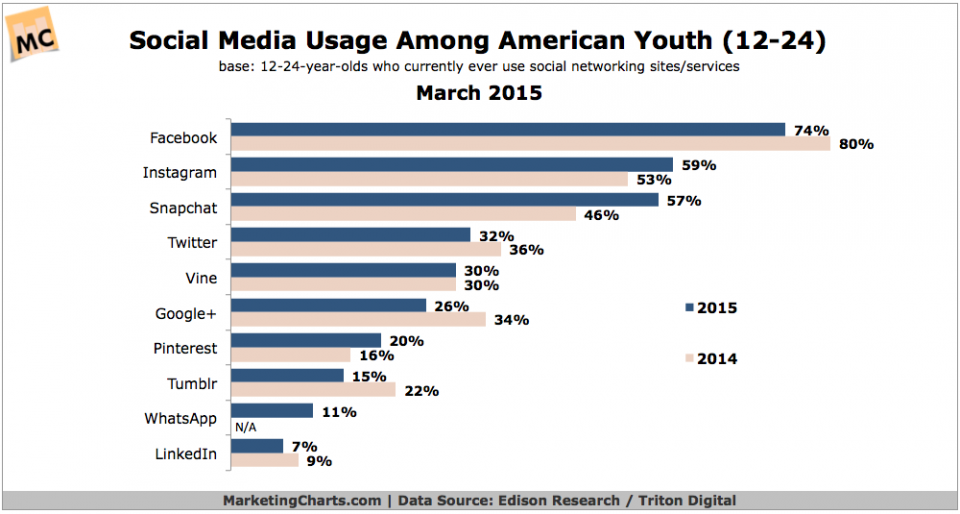
While Facebook was defending itself from allegations that it doesn’t care about people’s privacy, Snapchat’s founders released a platform where you set the rules on who sees your messages and where privacy becomes a fun feature.
By being able to send people photos that only exist for a few seconds it become part game, part extremely personal, and part sticking your middle finger up at having your family and teachers see everything you do on Social Media.
In your hunt to create separation against a dominant competitor, look for fundamental limitations and weaknesses in their model that are making people reluctant power users.
Harness a community and grow with it
For each of the companies mentioned, their road to success and market disruption happened because they became a representative for a culture of people — and then grew with them.
Sketch: With each release the community around the product grew and it meant expanding image libraries, groups, and resources. Their power users have an increasingly large voice in making this product better, together.
Slack: The app has blown up and so have the opportunities for the core supporters and potential ones. They recently announced an $80 million developer fund to encourage their users to create a platform ecosystem.
AirBnB: The AirBnB Superhost program has become their most important initiative. It encourages and supports, educates, and rewards their most valuable hosts to continue making AirBnB the most unique way to travel.
car2go: They have continued their determination to value people and their concerns about climate change by launching entire fleets of electric cars and by continually being involved with community events.
Snapchat: While they may have re-invented the social network paradigm, they continue to challenge the limitations of mobile interfaces and make it easier than any other site to view interactive news and content.
As you move through each phase of challenging your competition (and competitive landscape) remember to stay inquisitive and stay connected to the culture of the people who are your most important customers.
It’s worked extremely well for all the companies discussed above and it’s been the key to most major community-building strategies employed by many more successful organizations.
If you would like to discuss your project in detail, please contact us at PH1 Media and we can help jumpstart your path to success.
Good luck!
Arpy Dragffy is a strategist and educator who has been working in technology and web for thirteen years. His focus is on ideation and culture-building through exceptional product and experience design.
View More Resources

A comprehensive trend analysis of feline blade fascination in the digital pet ecosystem
The Sharp Truth: Why Digital Cats Are Obsessed with Virtual Knives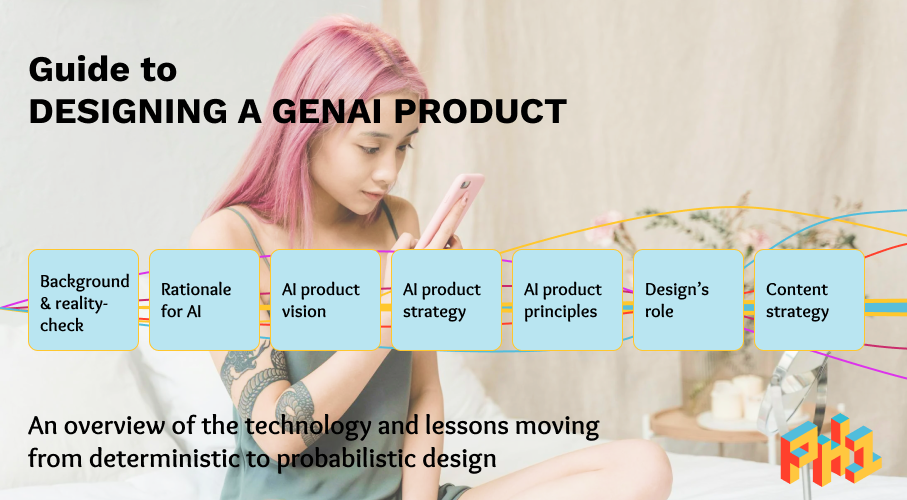
Strategy, AI, Design, Product
Guide to designing a GenAI product: From vision to content strategy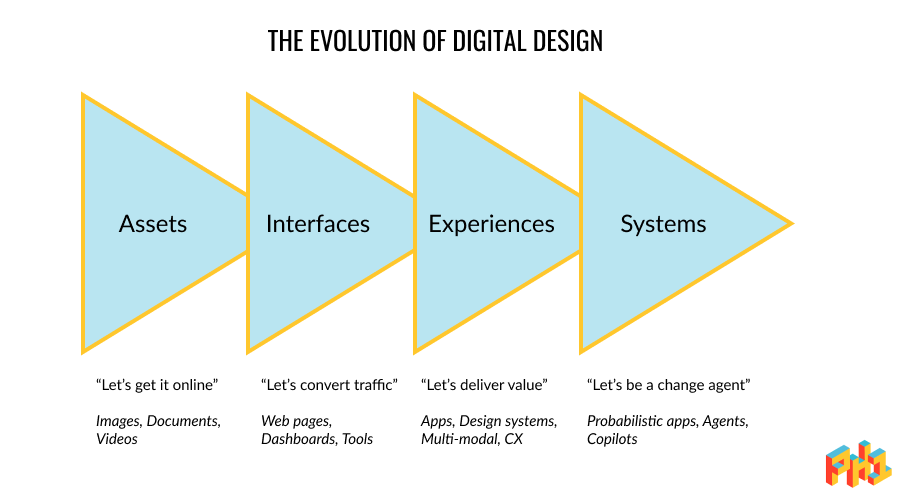
Strategy, AI, Design, Product
The end of UX? This is the start of the service design of AI
Strategy, AI, Design, Product
Build AI products that customers want | Design of AI podcast
Strategy, Methodology, Service Design
PH1 Research's Service Transformation Methodology
Strategy, Travel, Lessons
10 business lessons we learned travelling around the world
Trends, Strategy, Design
2016 Design trends: Do not fear the competition, no matter how big they are.
Trends, Innovation
Win Audiences in 2016: 6 Strategic Tips for Entrepreneurs and Business Leaders
Strategy, Gamification, Marketing
Guide to gamification: strategies to increase engagement and make your audience feel special
Tips
4 ways we helped entrepreneurs and business leaders around the world
Innovation, Strategy, Disruption
The disruption no one is talking about
Innovation, Assessment
Your business model will be disrupted if this describes your organization
AI, Innovation, Design Thinking
The key to solving problems and designing solutions that an AI can’t: Irrational behaviour
Innovation, Future-proofing
Thanks to Google, the end of the mobile app is near
Innovation, Engagement, Future
Forget VR — Mobile cameras are the greatest innovation your business must embrace
Travel, Tourism, Trends
Asia-Pacific travellers: about to transform the global tourism industry
Article, Innovation, Competition
It’s time to realize you’re already competing with Amazon, Google, Facebook, Apple
Not only is health care challenged by aging, so is the way of life of rural citizens
Japan and North America's Aging Problem that startups must address
CX, UX, Research
Innovating your organization begins by understanding your customer experience
CX, UX, Research
Becoming customer-centric: What most organizations get wrong
Research, Public Health, Strategy
Our personal views about health are changing the way we want to be engaged
CX, Toolkits
Becoming customer-centric: 3 toolkits to measure your Customer Experience
COVID-19, Resources, Research
PH1's research initiative to improve the CX of organisations impacted by COVID-19
BlackLivesMatter, Accessibility
Researchers can help end systemic racism that plagues products and services
Research, COVID-19, Lessons
3 lessons: Becoming an adaptive & resilient organization
Public health guide
Information Architecture for Public Health Organizations
Tips & lessons
Strategies for success: Usability testing & user research of government websites and public services
Tips & lessons
Recruit the right audience for your research: Social media recruitment
Methodology and Examples
Intro to Customer Experience
Tips & lessons
How to create customer journey maps & journey mapping tips
Outcome of our annual planning retreat
PH1 Research's 2022 Strategic Vision
Privacy Policy
PH1 Research Privacy & Data Security Policy
Methodology and Examples
Intro to Service Design
Methodology and Examples
Intro to Innovation Sprints
UX, strategy, human-centred design
UX needs to set the bar higher than usability
Innovation methodology
Turning Fandom into Revenue with Web3
About Us
Our Epic Annual Remote Retreat: Colombia Edition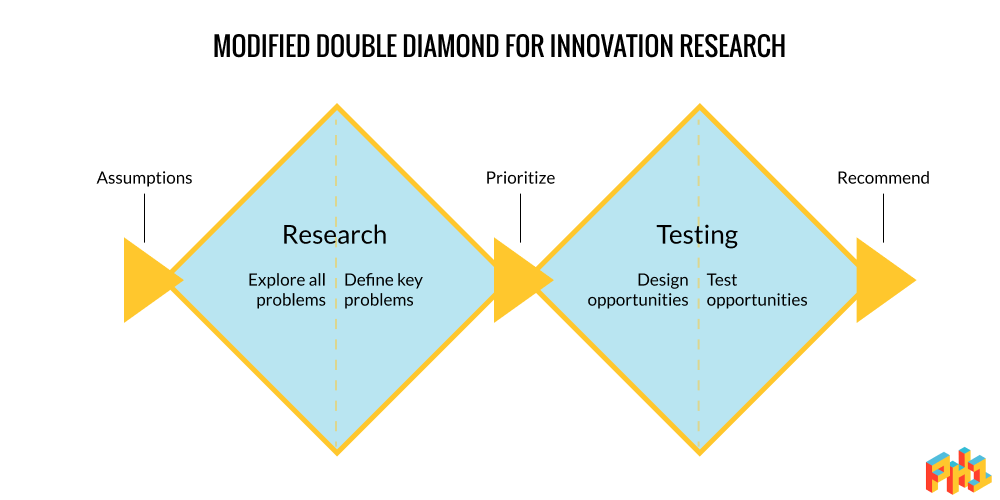
Innovation research guide
Guide to researching new products & testing concepts
Innovation methodology
A guide to overcoming uncertainty impacting your product or service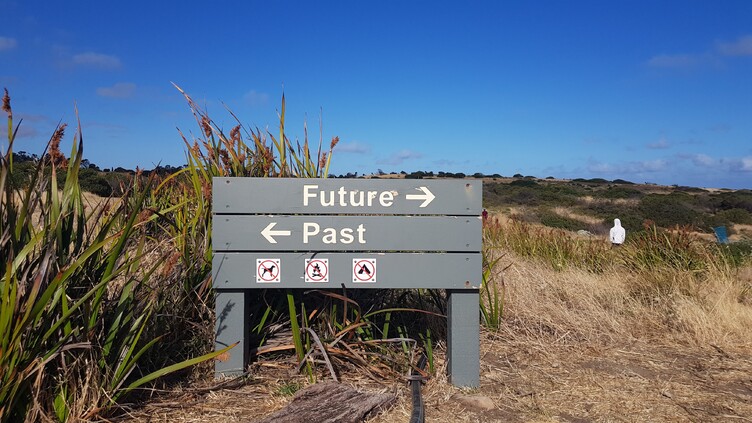
Innovation methodology
For More Impactful UX Strategy, Use Futures Thinking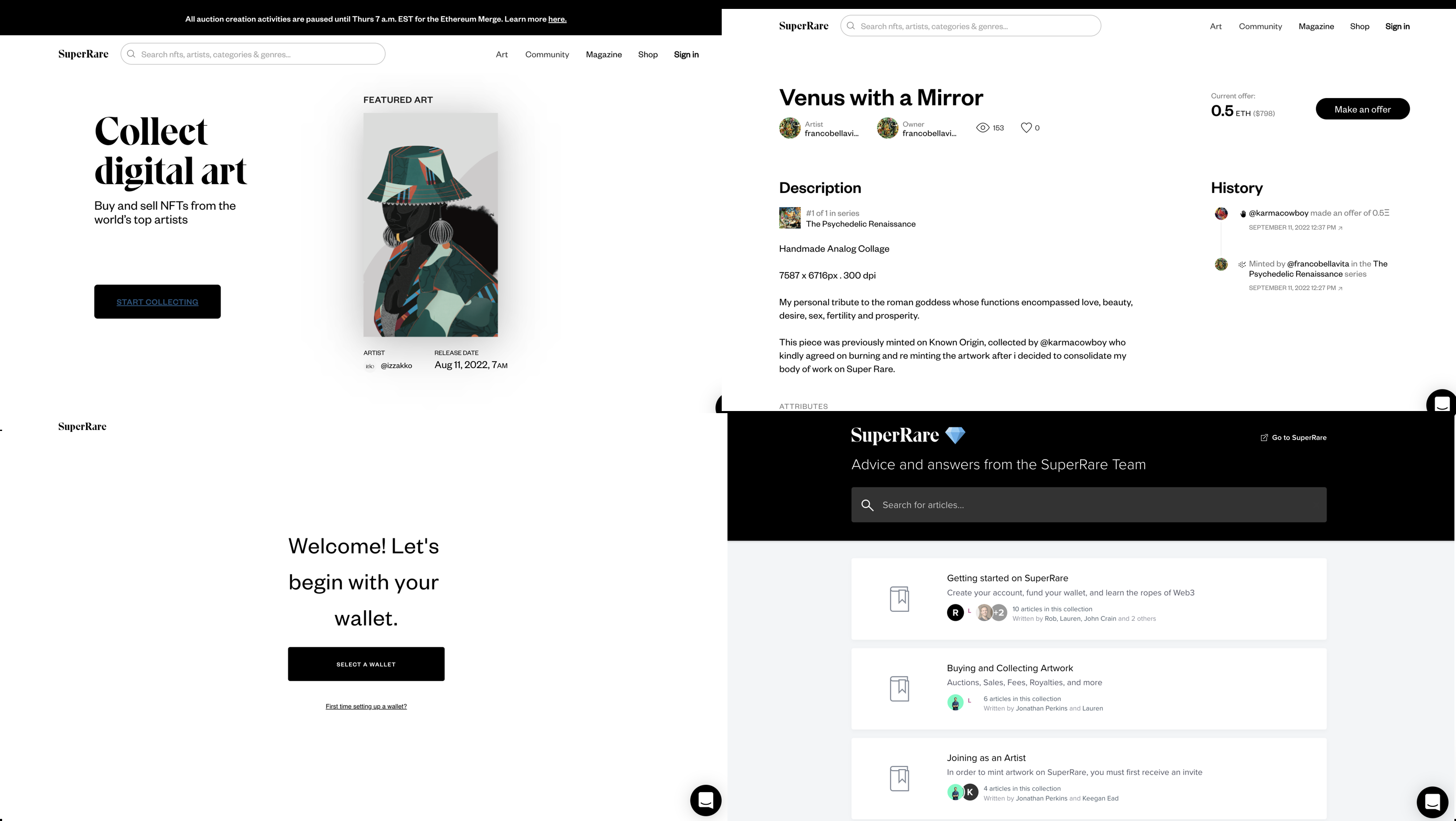
Audit & analysis
Web3 has a major UX problem
Tips & lessons
10 lessons about how to improve tech & your success as a researcher, designer, product manager
 Our Work
Our Work